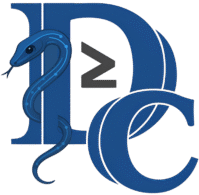Listen to this Post
How CVE-2025-3253 Works
This vulnerability exists in AdminTwo 1.0 within the `/ztree/insertTree` endpoint due to improper sanitization of the `Name` parameter. Attackers can inject malicious JavaScript payloads via this parameter, which are then executed in the victim’s browser when the application renders the content. The attack is remotely exploitable with low privileges, requiring only user interaction (e.g., clicking a crafted link). The CVSS 4.0 vector (AV:N/AC:L/PR:L/UI:P) confirms network accessibility, low attack complexity, and partial user interaction.
DailyCVE Form:
Platform: AdminTwo
Version: 1.0
Vulnerability: Stored XSS
Severity: Medium
Date: 2025-04-23
What Undercode Say:
Exploitation:
- Craft a malicious request to `/ztree/insertTree` with a JavaScript payload in the `Name` parameter:
POST /ztree/insertTree HTTP/1.1 Host: target.com Content-Type: application/x-www-form-urlencoded Name=<script>alert(document.cookie)</script>
- Social-engineer a victim to trigger the payload via a stored XSS attack.
Mitigation:
- Patch by sanitizing user input with HTML entity encoding:
$name = htmlspecialchars($_POST['Name'], ENT_QUOTES, 'UTF-8');
2. Implement Content Security Policy (CSP) headers:
Content-Security-Policy: default-src 'self'; script-src 'unsafe-inline' 'unsafe-eval'
Detection:
Scan for unescaped output in `/ztree/insertTree` using static analysis tools like Semgrep:
rules: - id: xss-admintwo pattern: echo $_POST["Name"]; message: "Potential XSS in AdminTwo"
Analytics:
- Attack Vector: Remote (Web)
- Privilege Required: Low
- User Interaction: Required
- Exploit Maturity: Public (PoC Available)
- Affected Components: `/ztree/insertTree` endpoint
References:
Sources:
Reported By: nvd.nist.gov
Extra Source Hub:
Undercode

